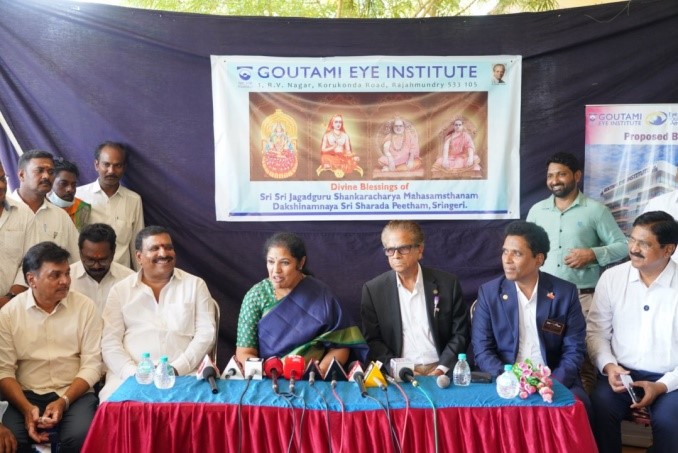Strengthening U.S.-India Defense Partnerships With MQ-9B
With MQ-9B, India not only is operating the most sophisticated remotely piloted aircraft in the world, but it is joining with some of the most sophisticated air arms on the planet in establishing a highly modern and mutually beneficial structure for developing and building its fleet.
 GA-ASI’s MQ-9B SkyGuardian® unmanned aircraft. / General Atomics
GA-ASI’s MQ-9B SkyGuardian® unmanned aircraft. / General Atomics
Modi’s visit highlights India’s arrival at the world’s top table. The nation he represents is leading in renewable energy, technology, and more, including the most advanced systems for preserving peace and security in the Indo-Pacific region.
That the United States and other governments, by the way, have adopted the moniker “Indo-Pacific” in place of the old phrases “Asia Pacific” or “Western Pacific” is proof of how India’s continued success has so affected the world’s perspective that it has even changed its language.
But Modi’s government has not achieved all this by itself. It is thanks to his prudent strengthening of relationships, especially with Washington, that these partners can glean the benefits of each other’s contributions in a way that benefits them, the region, and the rest of the globe.
One key example is with the Indian military services. They are operating pre-production examples of our MQ-9B SkyGuardian® remotely piloted aircraft system in a lease agreement made possible thanks to careful diplomacy between New Delhi and Washington. Negotiations are underway for a larger batch of aircraft that the Indian government would own outright and to which Indian manufacturers would make significant industrial contributions.
Our company has proven this model with great success in other cases, including the U.K.’s Royal Air Force. British manufacturers produce aircraft components and other inputs that go into final assembly for the RAF’s version of the aircraft, known as the Protector RG Mk 1. Similar arrangements are underway with Canada and other nations.
With MQ-9B, India not only is operating the most sophisticated remotely piloted aircraft in the world, but it is joining with some of the most sophisticated air arms on the planet in establishing a highly modern and mutually beneficial structure for developing and building its fleet.
The details still are in negotiation, but some aspects of the arrangement already have been announced. For example, General Atomics Aeronautical Systems, Inc., and Bharat Forge Limited announced a partnership to manufacture main landing gear components, subassemblies, and assemblies of remotely piloted aircraft.
Part of the Kalyani Group, Bharat Forge is the largest repository of metallurgical know-how, design and engineering expertise, and manufacturing prowess in India. With over five decades of experience in manufacturing a wide range of critical high-performance safety components, Bharat Forge offers full-service supply capability from concept to product design, engineering, manufacturing, testing, and validation.
Other relationships will increase the Indian value added to each MQ-9B aircraft, strengthen the Indian aerospace industrial sector, and further expand Mr. Modi’s Atmanirbhar Bharat Abhiyaan goals—the object that, as it’s known in English, we Make in India.
The pre-production MQ-9Bs already have changed the Indian Navy’s ability to operate around the region. Larger numbers of newer, more capable production-model aircraft will take this to the next level.
 SeaGuardian shown in its ASW configuration with sonobuoy dispenser and monitoring / control systems. / General Atomics
SeaGuardian shown in its ASW configuration with sonobuoy dispenser and monitoring / control systems. / General AtomicsThese aircraft can fly for more than 30 hours, in some configurations, in virtually any weather conditions, and provide the highest-quality intelligence, surveillance, reconnaissance, and other capabilities. The aircraft’s onboard sensors send back full-motion video anytime of day or night. Its synthetic aperture radar permits naval commanders to see through cloud, smoke, rain, mist, or other conditions. And it can carry a huge variety of payloads to further extend its capability and versatility.
For example, an aircraft might go on patrol with an additional radar attached to its centerline station. This sweeps the ocean surface over all 360 degrees and provides complete awareness about all the ship traffic in the region. The aircraft also monitors the Automated Information System (AIS) that vessels use to transmit information about themselves, their cargoes, the points of origins, destinations, and so on.
But the smarts of this system go still further. Let us imagine that a vessel wished to attempt to sail through an area and deceive the navy or coast guard authorities. It might turn off its AIS transmitter in hopes that no one would see. MQ-9B sees it, however, and notes that it is not broadcasting. This it calls to the attention of naval authorities, who can then fly the aircraft closer to investigate the ship in question. With the aircraft’s powerful onboard sensors, they can see exactly what type of vessel is below, even reading the right name off its hull.
The benefits for India haven’t been theoretical. Repeatedly, these aircraft have helped the Indian Navy take on its new and greater role as a security provider for the Indian Ocean and the wider region. They have helped monitor pirates and supported rescues of hijacked ships. When Indian special operations troops dropped by parachute to free one captured ship, commanders on land were able to watch the whole proceedings live thanks to the MQ-9B orbiting overhead.
Adding more of these aircraft, increasing their capabilities, and enhancing the powers of India’s aerospace and defense sector—all these and other benefits emerge from the continued partnership between Modi’s government and the United States. As he visits for his address to the United Nations, the value of this relationship is worth remembering and celebrating.
The author is the Chief Executive Officer of General Atomics Global Corporation.
(The views and opinions expressed in this article are those of the author and do not necessarily reflect the official policy or position of New India Abroad.)
ADVERTISEMENT
ADVERTISEMENT
E Paper
Video



.jpg)

.jpg)


.jpeg)
.png)
.png)

.jpg)

Comments
Start the conversation
Become a member of New India Abroad to start commenting.
Sign Up Now
Already have an account? Login